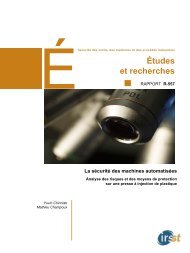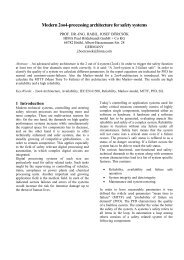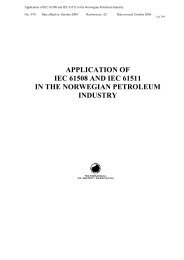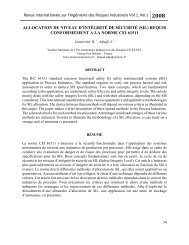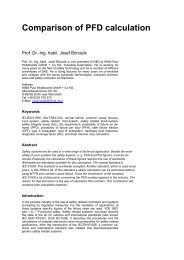Functional Safety
Functional Safety
Functional Safety
You also want an ePaper? Increase the reach of your titles
YUMPU automatically turns print PDFs into web optimized ePapers that Google loves.
White Paper<br />
Tino Vande Capelle, Dr. M.J.M. Houtermans<br />
<strong>Functional</strong> <strong>Safety</strong>: A Practical Approach<br />
for End-Users and System Integrators<br />
Path 1 Failed<br />
T1 Tm1 I1<br />
Path 2 Failed<br />
T2 Tm2 I2<br />
<strong>Safety</strong> Function Failed<br />
Input Failed Logic Failed<br />
CC CPU CC O1 O2 O3<br />
Fig. 4. Simplified fault tree diagram safety function<br />
Output Failed<br />
SOV Drain R1 R2 R3<br />
Valve<br />
Research has indicated that Markov analysis is the most complete and suitable technique<br />
for safety calculations. Markov is a technique that captures transitions between two unique<br />
states. In terms of safety this means the working state and the failed state. Going from one<br />
state to the other can either be caused by a failure of a component or by repair of a<br />
component. Therefore a Markov model is also called a state transition diagram. See Figure<br />
5 for the Markov model of the safety function of Figure 1. Once the Markov model is created<br />
and the rate of transition is known between two states (that is the failure rate or repair rate) it<br />
is possible to solve the Markov model and calculate the probability of being in a state.<br />
OK<br />
Path 1<br />
Failed<br />
Path 2<br />
Failed<br />
Fig. 5. Markov model safety function<br />
System<br />
Failed<br />
HIMA <strong>Functional</strong> <strong>Safety</strong> Consulting Services Page 17



